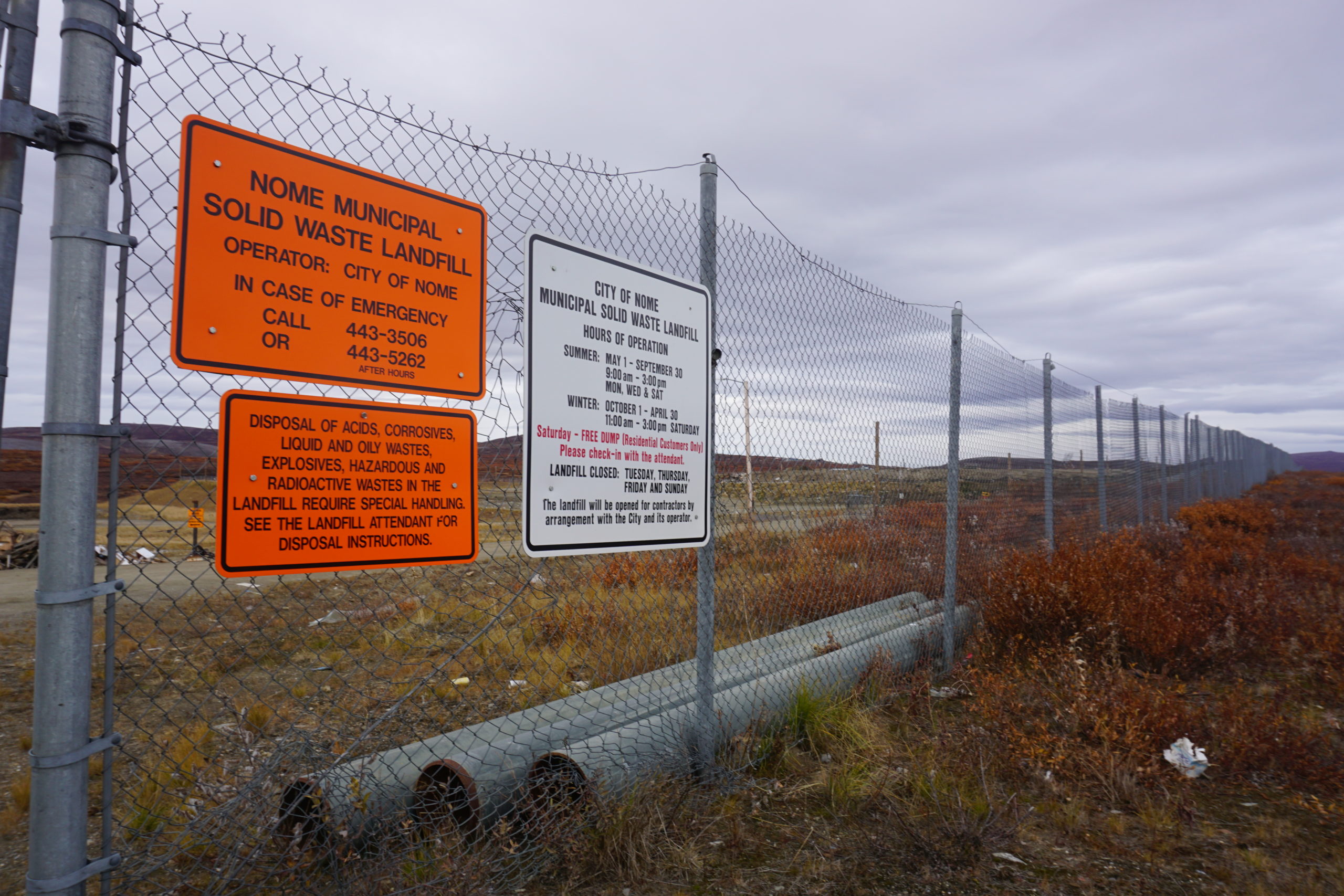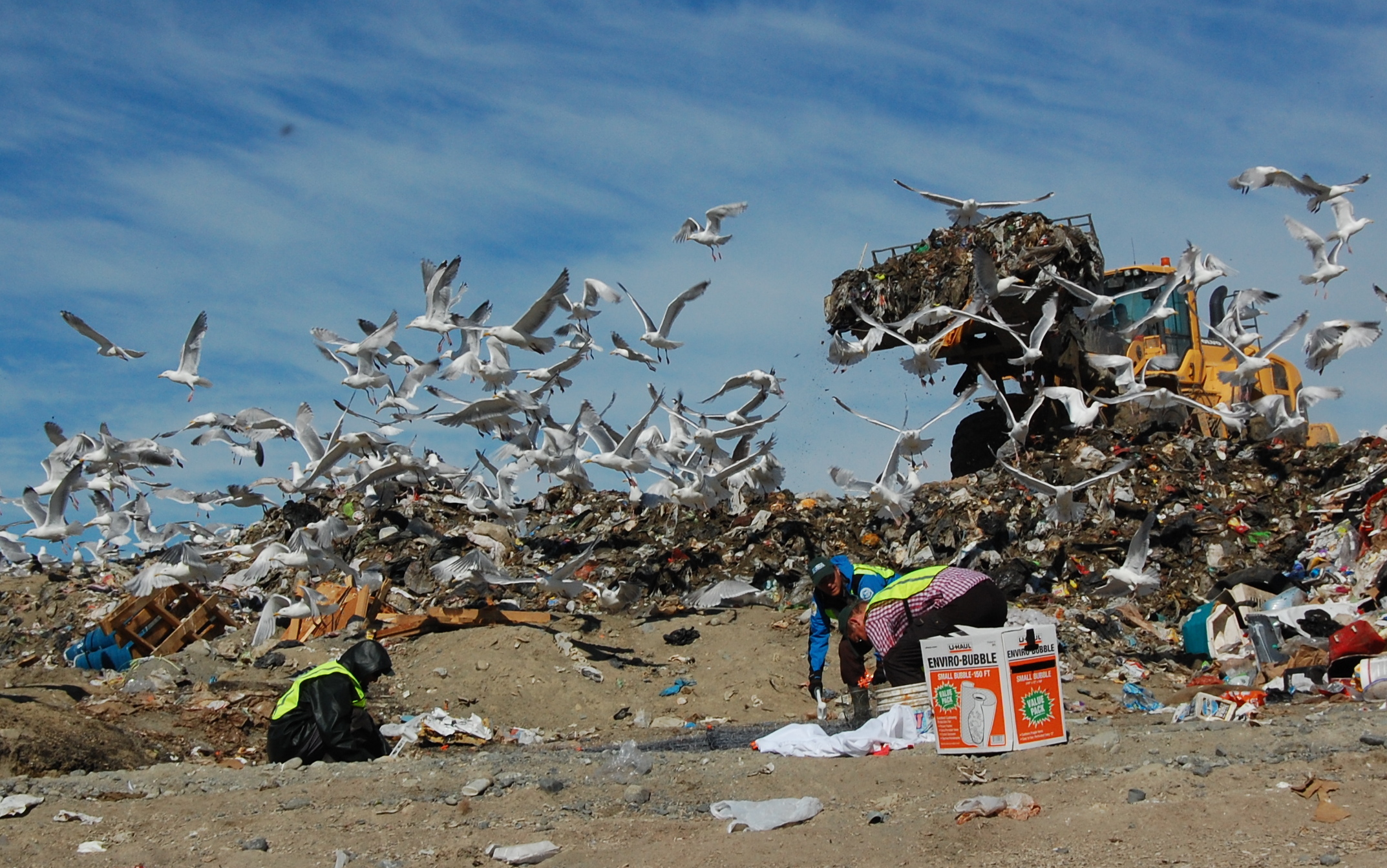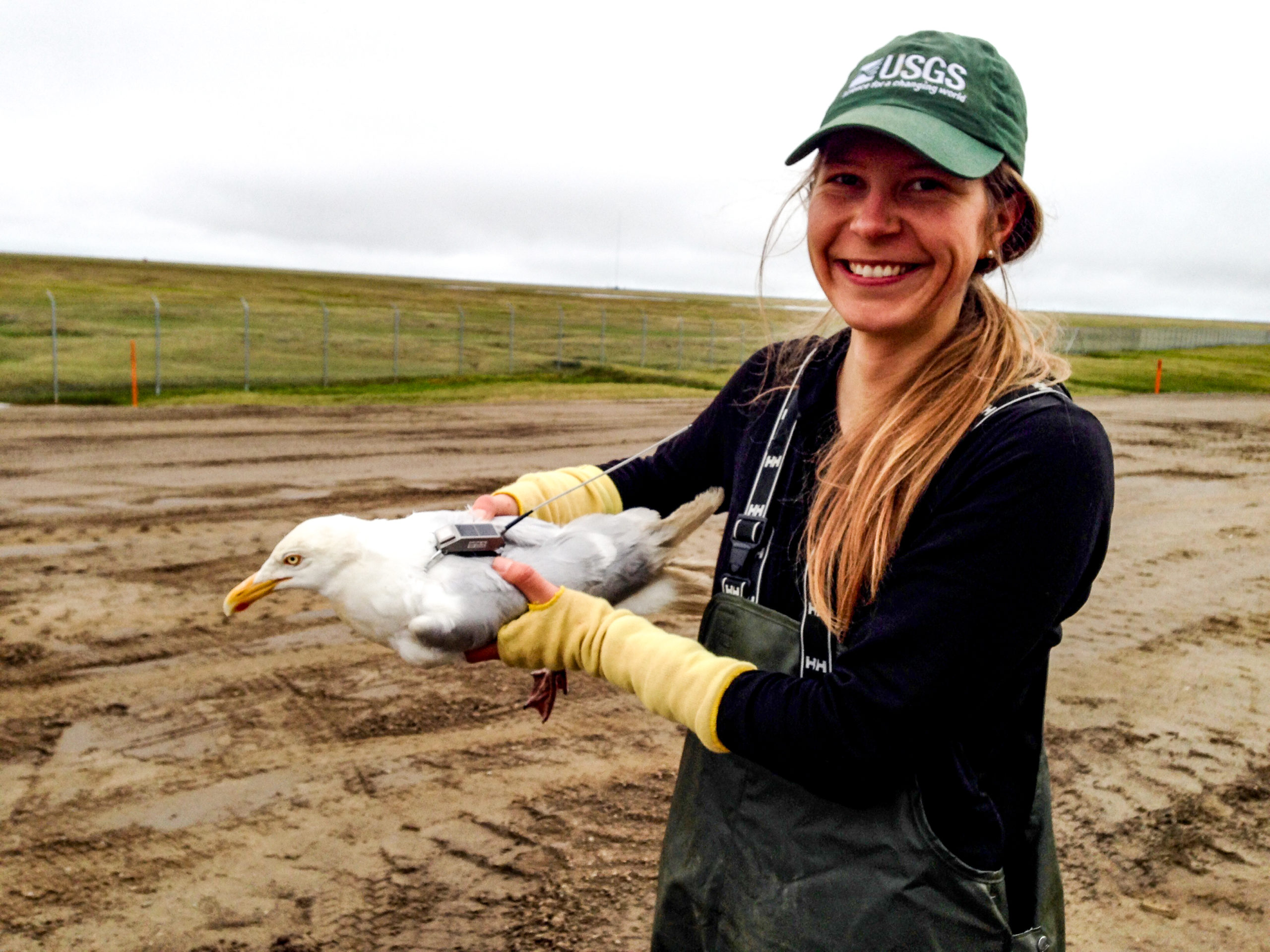Climate change threatens to spread antibiotic resistance in the Arctic
More human activity and thawing permafrost both increase the risks that antibiotic resistance will spread more widely in the Arctic.
The warming climate in Alaska and across the circumpolar North is creating new health and safety risks for people, animals and ecosystems. This piece is the final installment in a series that explores zoonotic diseases and other hazards emerging in a warming and thawing Alaska.
Three miles uphill from the Bering Sea beach, gulls darting in and out of the Nome landfill and foraging in the trash collected from on the northwest edge of North America are getting more than a convenient snack.
Some of those birds are being exposed to antibiotics and, through that exposure, picking up bacteria with antibiotic resistance — even in a Bering Strait town of just 3,900 located far from any factory-farm operations with antibiotic-laden livestock. And those trash-foraging gulls, scientists have discovered, are capable of swiftly carrying those resistant microbes to new places, like across the Bering Strait to Russia’s Chukotka Peninsula.
The bottom line of the findings, described in a U.S. Geological Survey-led study published earlier this year: Where there is more human presence, there is more chance of antibiotic resistance in the environment that can be transported over long distances by birds.
“That trend is remarkably clear — that is, if we have a bigger population, you have more resistant bacteria. To me, that’s probably the clearest scientific evidence that I’ve personally seen to date that shows to that, yes, these birds are clearly getting the bacteria from people,” said co-author Andy Ramey, a USGS wildlife geneticist who for several years has been tracking the relationship between Alaska birds and antibiotic resistance.
The gulls carrying resistant microbes had plenty of opportunities to disperse them. A previous lab study found that gulls shed such microbes for about 30 days, Ramey said. Tracked gulls in this study were able to travel far in much less time; one gull made it from Utqiagvik, Alaska’s northernmost community and another site where antibiotic resistance was detected, to Russia’s Chukotka in just two days, for example.
Antibiotic and antimicrobial resistance is a problem of global significance, increasingly undermining the effectiveness of medicines critical for fighting infectious diseases. Alaska or other parts of the Arctic are certainly “not the epicenter” of antibiotic resistance in the environment, Ramey said. On the contrary; more heavily populated regions far to the south are the more serious sources.
However, antibiotic resistance has been showing up in recent years in the environments of some seemingly unlikely polar regions.
Earlier research by Swedish scientists found antibiotic-resistant E. coli in gulls, geese and sandpipers in northeastern Siberia and northern Greenland and in gulls at Point Barrow at the northern tip of Alaska. Antibiotic resistance has been found in penguin feces and seawater in Antarctica.
One stunning discovery came in 2013 when an antibiotic-resistant “superbug” first identified in India in 2008 was found in an isolated lake on the Arctic island of Svalbard. “Antibiotic resistance genes from around the world are accumulating in even the most remote locations,” said the 2019 research paper that described that discovery. Seabirds and their feces are the “most plausible source” of the superbug found in Svalbard, the study said.
What gulls show scientists about the spread of resistance
The recent USGS-led study that brought scientists to the Nome landfill targeted seven Alaska sites in total. In 2016 and 2017 field seasons, the scientists collected freshly produced gull feces, tested the Escherichia coli bacteria within those feces, equipped temporarily trapped gulls with satellite tracers and monitored their flights out of Alaska.
Antibiotic prevalence in gull-carried microbes in Nome turned out to be lower than in more heavily populated areas that were part of the study — Bethel, Soldotna on Alaska’s Kenai Peninsula and Anchorage, Alaska’s biggest city. In contrast, in samples collected in much smaller and more isolated towns, the Aleutian town of Adak and the tiny Alaska Peninsula community of Cold Bay, genes extracted from E. coli revealed no antibiotic resistance.
The Nome results were notable for the virulence of the antibiotic resistance detected. In two cases, genes extracted from samples collected at the Nome landfill showed resistance to all nine of the antibiotic types tested in the study.
The discovery of resistance to these particular antibiotics does not signal any meaningful or current health risks to gulls, Ramey said.
What is significant, though, is that gulls — relatively easy to sample and tending to congregate near humans — are effective guides to the movement of antibiotics disposed of by people through garbage and wastewater.
“They tell us quite a bit about potential microbial pollution that we’re putting into the environment,” Ramey said.
Some of the spread is tied to lapses in waste management.
At Soldotna, a town about a three-hour drive south of Anchorage, the landfill is a notorious haven for feeding gulls — and, previous research by Ramey and his colleagues has shown, a hotspot for antibiotic-resistant E. coli. Even in Antarctica, human-produced wastes are fingered for triggering the discovered antibiotic resistance, with the Palmer Station research center and wastewater treatment plants serving stations on the continent’s southwestern and eastern regions among identified sources.
As Alaska and the Arctic warm and sea ice diminishes, human presence in the region is expected to increase, creating more potential for the release of antibiotics and the spread of resistance in the environment.
Nome is the site of a port that serves the increasing Arctic ship traffic, a fact noted in the USGS-led study. Increased shipping spurred by ice retreat raises several environmental concerns, including effects of wastewater discharges. Regulation of discharges from ships sailing the northern Bering Sea is patchy and riddled with gaps, according to an analysis by the Pew Charitable Trust.
The threat from newly thawed microbes
Climate change can spread antibiotic resistance into the Arctic through another way, too: permafrost thaw.
Microbes released by permafrost thaw can develop resistance if exposed to antibiotics, and they can spread the resistance to other types of activated microbes through bits of DNA called plasmids. As the gull research shows, birds can carry antibiotics from one part of the world to another — potentially from agricultural regions in the south where antibiotic use is heavy to thawing, non-agricultural regions in far to the north.
Such a “really bad scenario” requires several pieces to fall together, starting with the birds being exposed to antibiotics and gaining microbes that develop resistance, said Devin Drown, an assistant professor at the University of Alaska Fairbanks who is studying permafrost and the microbes contained within it.
“Not only does that microbe have to survive the journey, it has to enter an environment where it might not survive,” said Drown, who heads a research team that has been examining microbes in newly thawed soils in Fairbanks and elsewhere in Alaska. “Once it’s in the environment, it’s got to compete with other microbes that don’t have the antibiotic-resistant genes.” Overall, he said, it’s an improbable sequence of events.
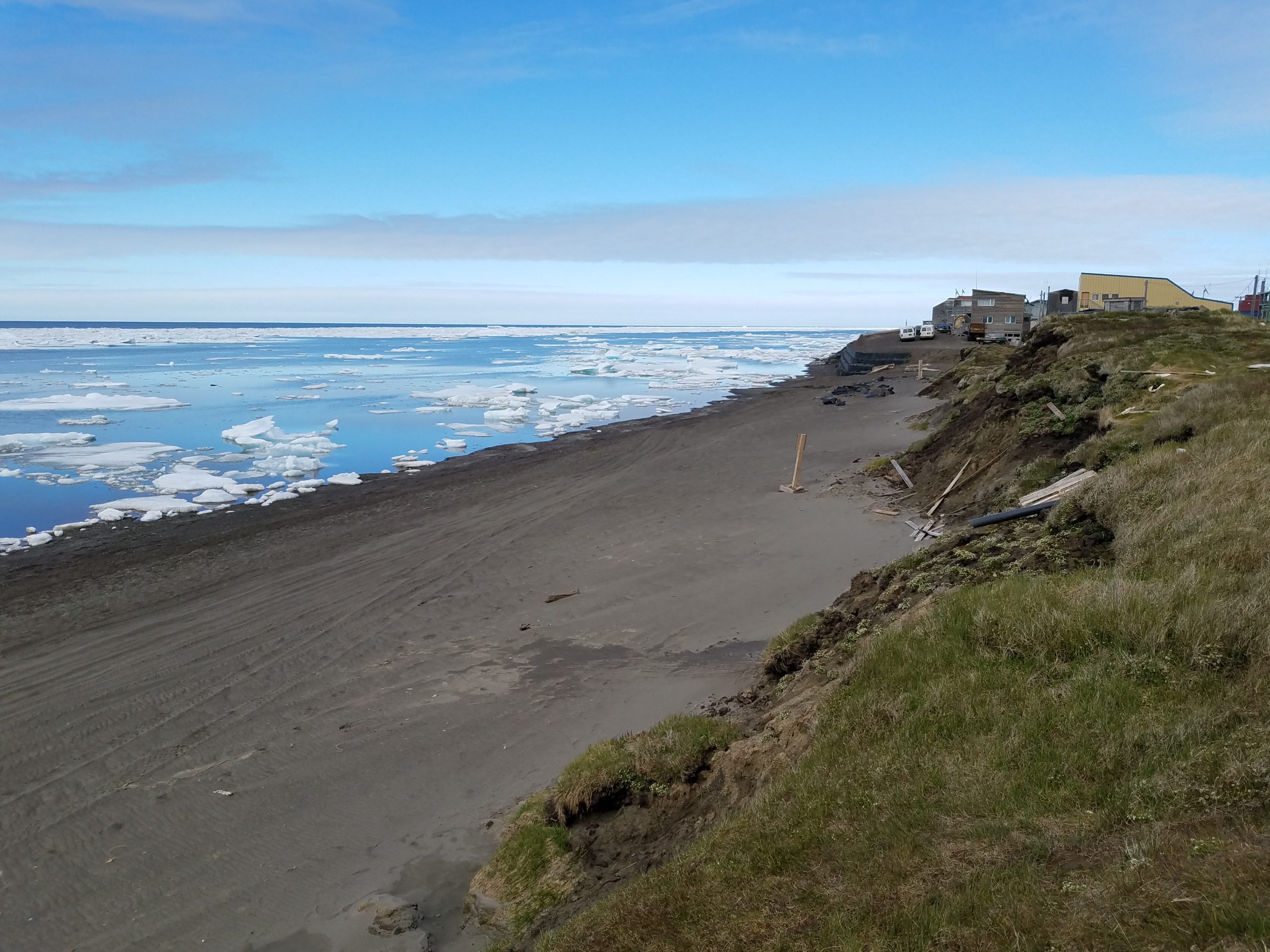
Still, there is understandable concern about certain hardy microbes like anthrax that can be released from thawing permafrost, he said. “It’s probably very resistant to the freeze-thaw cycle,” he said of anthrax.
Microbes in permafrost do not necessarily need any introduction to modern pharmaceuticals to be resistant to antibiotics, however. Some types of bacteria that can emerge from thawed permafrost are naturally resistant.
In Canada’s Yukon Territory, antibiotic resistance was found in permafrost soil even 30,000 years old. The findings “firmly establishes that antibiotic resistance genes predate our use of antibiotics and offers the first direct evidence that antibiotic resistance is an ancient, naturally occurring phenomenon widespread in the environment,” said the 2011 study published in the journal Nature that described the discovery. And in Siberia, resistance has been found in permafrost bacteria even millions of years old.
The permafrost in and around Fairbanks is a reservoir for antibiotic-resistant microbes, according to research by Drown’s group at UAF.
Samples taken from the Fairbanks Permafrost Experiment Station, an ice-rich site maintained by the U.S. Army Corps of Engineers, showed that microbes from the thawed soils are resistant to several types of antibiotics. The findings, described in a study published in January, compared resistance in the genes of microbes pulled out of plots with undisturbed, semi-disturbed and heavily disturbed permafrost. The microbes came from the active layer, where soil that thaws and refreezes annually. In the undisturbed areas, the active layer is less than a meter thick, while the most disturbed permafrost at the station has an active layer that goes down to nearly 10 meters.
As might be expected, microbes from the soils in the most disturbed areas showed the most total antibiotic resistance. But even those from the undisturbed areas had some resistance. Overall, 91 percent of the isolated microbe genes showed at least partial resistance to at least one antibiotic, and 45.6 percent showed at least partial resistance to multiple antibiotics. The microbes’ genes were most resistant to ampicillin, with an 82.5 percent rate, the study found. They were least resistant to tetracycline, with a 2.2 percent resistance prevalence.
“This result just confirms that in these soils there are bacteria that are resistant to clinically significant antibiotics,” said Tracee Haan, a UAF graduate student in Drown’s research team and the lead author of the study.
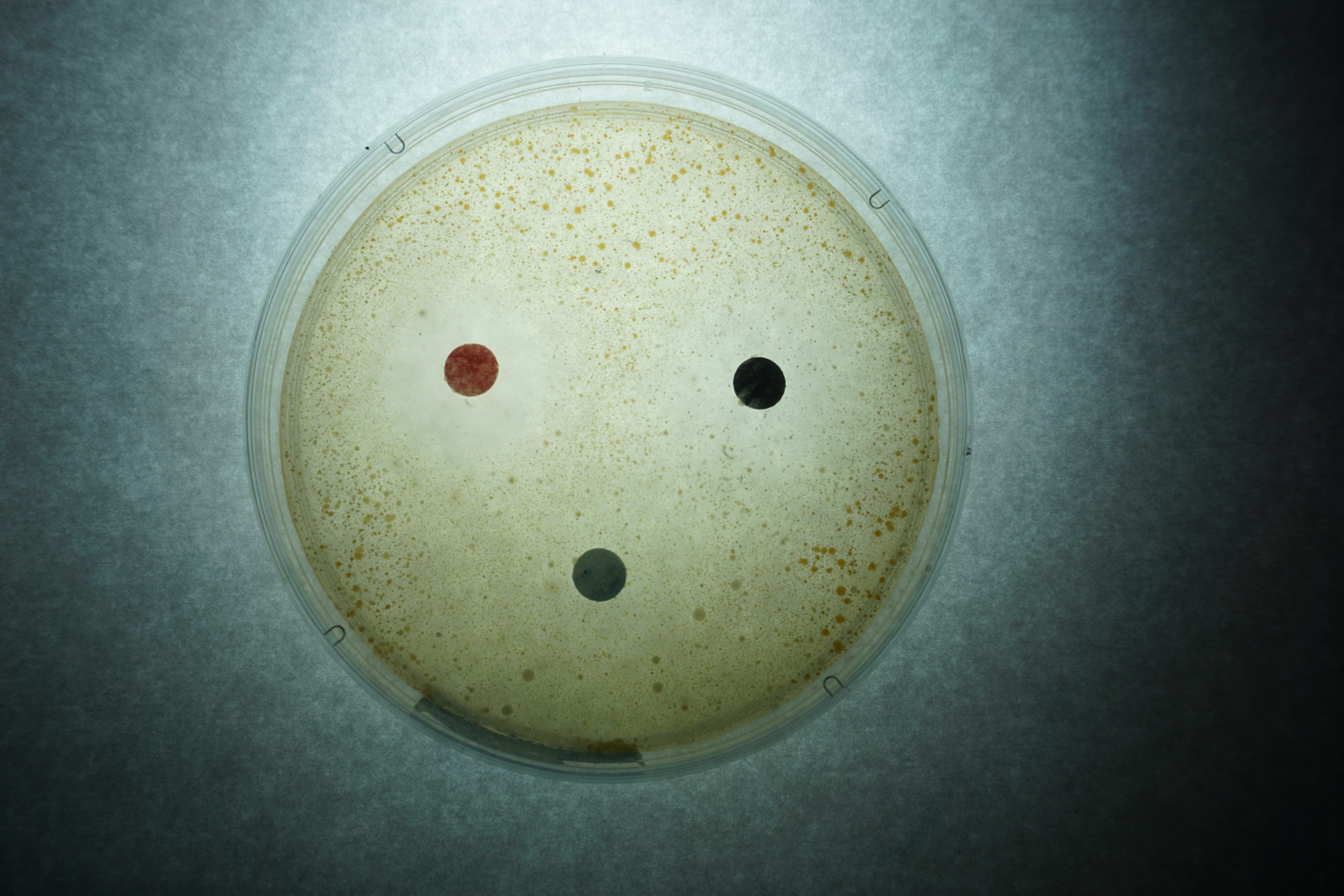
A key finding was that microbe type was even more important to the presence of antibiotic-resistant genes than the level of permafrost disturbance. “We found that the type of bacteria that was present was a greater determining factor in the abundance of genes,” Haan said. Showing the most genes with resistance, she said, were proteobacteria, a large class that includes well-known disease spreaders like Salmonella, Vibrio and Escherichia.
Metals in the soil can also create antibiotic resistance in microbes. Bacteria exposed to amounts of heavy metals like copper, nickel and silver can mutate to survive despite the presence of what would otherwise be a toxic substance. The same evolutionary race that allows the bacteria to survive with metals exposure can give bacteria the power to ward off the impacts of antibiotics.
The creation of antibiotic and antimicrobial resistance through metals contact is now a well-understood hazard, with documented cases in places as varied as contaminated agricultural sites and a mine site in China, polluted areas in urban Belfast, in metals-rich archived soils in Scotland and a contaminated area of the Savannah River in the U.S. state of Georgia.
In Alaska, where numerous old mine sites dot the land, metals contamination could combine with permafrost thaw to create more problems, Drown said. “I wonder about the opportunity for the introduction of metal into soil,” he said. “You can get the evolutionary selection for antibiotic resistance without the input of antibiotics.”
One metal of concern is mercury, which exists in vast amounts in the world’s permafrost. Thaw is enabling sequestered elemental mercury to be released. That is already the case in the thawing permafrost along the Yukon River, which flows nearly 2,000 miles from Canada’s Yukon Territory to the Bering Sea.
Antibiotic resistance and ecological changes
Thaw in the ground has also altered microbial communities in such a way that they affect the growth of plants above the surface, according to another new study from Drown’s group at UAF.
The study, which also used samples from the Fairbanks Permafrost Experimental Station soils, found that plants grew significantly worse in soils with microbes found in disturbed permafrost than they did with the microbes found in undisturbed permafrost. The project tested greenhouse-cultivated plants, including wild blueberry and cranberry bushes, which are important sources of food for people and thus important to food security.
The lesson of the studies so far, said Drown, is that that climate change and other human impacts are already altering the way soils function in Alaska — with myriad possible effects.
“We’re not waiting around for climate change to get to us. We see it now. What we’re discovering when we start looking beneath our feet at these microbes is that there’s a lot changing beneath our feet,” he said.
While antibiotic resistance is a “clinically relevant problem,” it can also touch off a series of ecological changes beyond the lost effectiveness of medicines used to treat people, he said.
“Antibiotics and resistance are also the weapons and armor that bacteria are using and fungi are using to do battle amongst themselves,” he said. That battle can transform the soil’s microbial communities.
“We might be changing ultimately the vegetation that survives, that grows, and we know the vegetation is going to be affecting the animals that are there,” he said. “As we see animals moving north, they bring in their own pathogens.” He cited, and an example, mule deer moving in from Canada to Alaska. “We’re worried about the ticks that they bring in because the ticks potentially carry other diseases.”
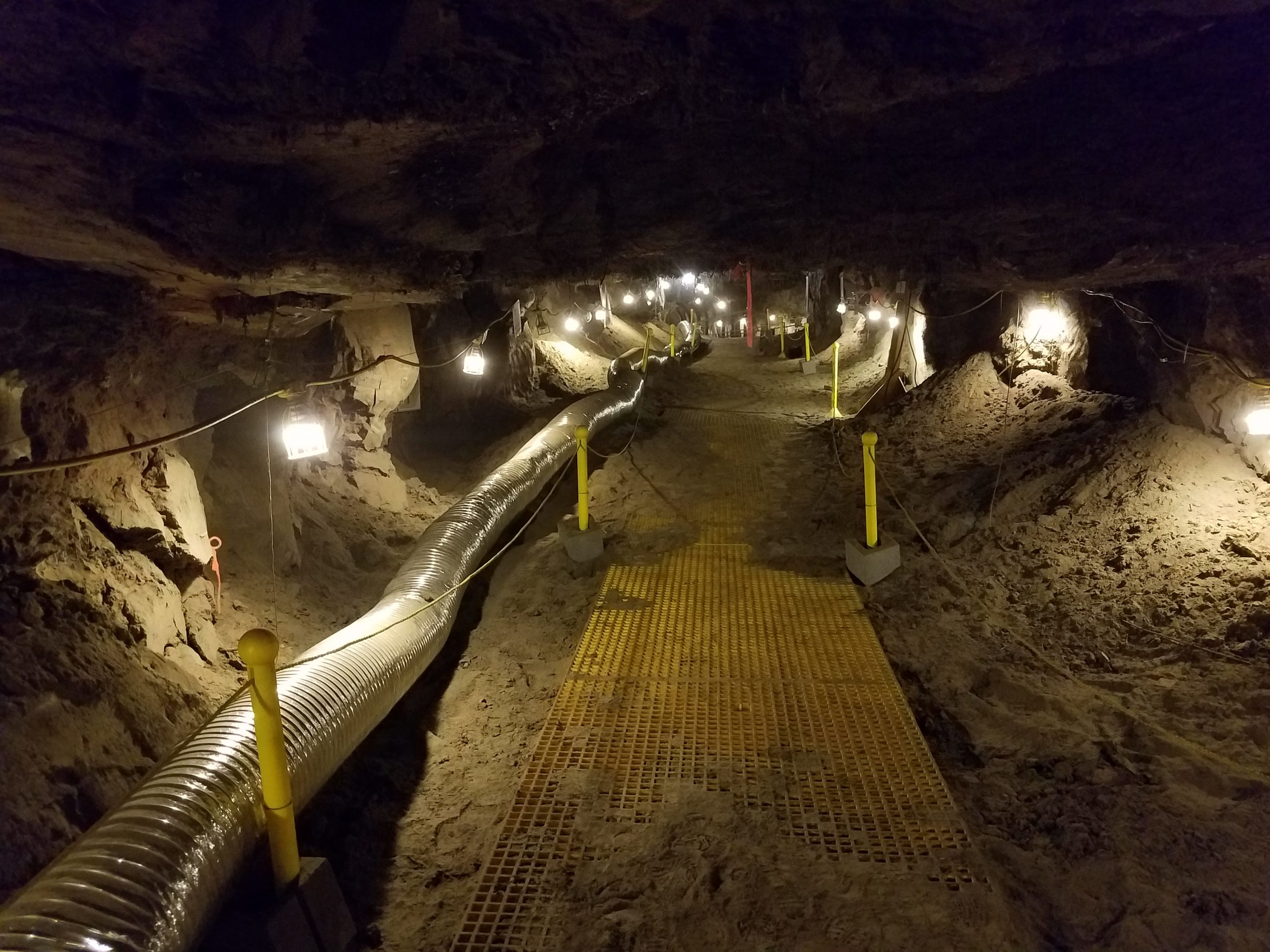
Not all of the discoveries about permafrost, microbes and antibiotics are cause for gloom.
Within some ancient soils, scientists have found bacteria that counter or neutralize antibiotic-resistant bacteria. In Northern Ireland, for example, a team led by Swansea University Medical School scientists found in ancient soils a type of bacteria that stops the growth of four known antibiotic-resistant superbugs.
The UAF group has made what might turn out to be a similar discovery in the permafrost-laden soil right on the UAF campus. The samples were drawn from the ground among the UAF ski trails that loop over a boreal forest floor that is undulating and bumpy from repeat freeze-thaw cycles.
“We discovered that some of these microbes do produce some kind of inhibitory compounds, so some type of antibiotic,” said Taylor Seitz, a graduate student in Drown’s lab and co-author of a study describing the find.
An undergraduate student working in the laboratory is trying to identify what those compounds are and if they are indeed some much-sought-after novel antibiotics, she said.
As antibiotic resistance spreads through the globe, the search is on for new antibiotics to keep up, and soils — permafrost or otherwise — could be a source, said Seitz. She and Haan have joined a network called Tiny Earth that focuses on the search in soils.
“There really is a pretty great potential for us to find new antibiotics if they just keep looking,” she said.
This story was supported by the Society of Environmental Journalists’ Fund for Environmental Journalism and the International Women’s Media Foundation Howard Buffett Fund for Women Journalists.
